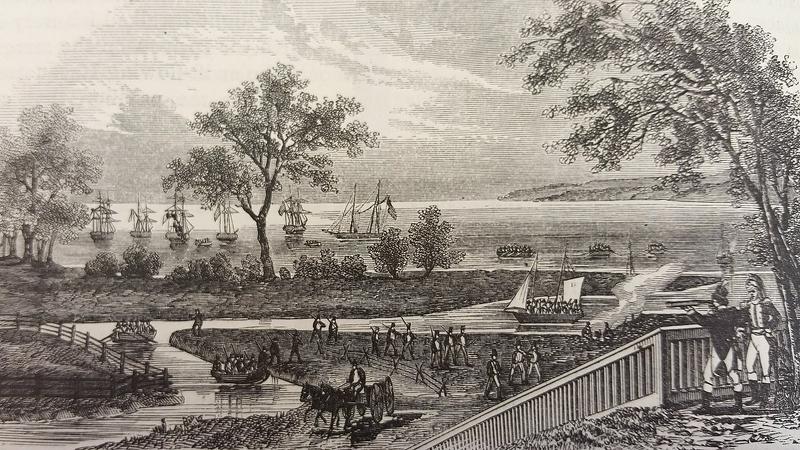The Rise Of Buffalo And The Grain Elevator
By | November 4, 2022

Buffalo began as a village, named after Buffalo Creek; the first recorded appearance of the name was in John Montressor’s 1764 journal. By 1802, a road to Pennsylvania was built; this road allowed people to travel to the Connecticut Reserve in Ohio. The road lessened the travel time between Albany and Buffalo which had been a week.
After The War Of 1812, It Became A City
After British forces burned Buffalo in 1813, they worked to rebuild quickly. Since this was a remote outpost, the residents hoped that the village would find prosperity with the coming construction of the Erie Canal. To accomplish this goal, Buffalo’s harbor was expanded during reconstruction. The expanded harbor caused Buffalo to be selected as the terminus for the Erie Canal, which helped to usher in prosperity for Buffalo. Once the Canal opened in 1825, Buffalo saw the development of commerce, manufacturing, and hydropower, and by 1832, the village of Buffalo was incorporated as a city after which Benjamin Rathbun, a businessman, expanded the business district.
The Erie Canal Brought Business
From 1845 to 1855, the city doubled in size, with a population that was two-thirds foreign born, and mainly comprised of a mix of unskilled and uneducated Irish and German Catholics. It was also a city that attracted many free blacks because the city was a terminus on the Underground Railroad. This populace made for a workforce to support the developing industry at the port. Passenger and commercial traffic was increasing, which in turn, led to the creation of feeder canals, and the further expansion of the port.

Europe Needed Grain
When the European colonists arrived in the New World, one of the first products they planted was wheat. It had become a significant trade item by the American Revolution, and there was a “bread belt” in the Middle and Southern colonies, extending north. That wheat needed to be shipped, and with the opening of the Erie Canal and the rise of Buffalo, the shipment of grain changed. They began moving it across the western Great Lakes to Buffalo. Once there, it was transferred to canal boats and transported to Albany, where it went down the Hudson to New York City so it could be exported. This shipment necessitated other wheat-related businesses.
Moving Grain Was Difficult Work
The movement of the grain from canal boats to the boats used to complete the journey also necessitated labor to transfer the grain. At first, the barrels were carried by hand by men, mainly Irish immigrants. These “scoopers” as they were called, had to carry the grain up many stairs, where it was weighed and then distributed to storage bins where it was held until it was sold. After this it was loaded onto ships. The work was backbreaking and slow, and it was a weak link in the process.
Dart And Dunbar Came Up With The Grain Elevator
During this time, in Black Rock, where a millrace was being used to mill flour, Joseph Dart, a businessman and entrepreneur met Robert Dunbar, a 30-year-old Scottish engineer who had studied in Canada, and who had come to Buffalo in 1834. The two worked to erect the 50 by 100-foot Dart grain elevator near the mouth of the Buffalo harbor. Once the grain arrived on the boats, it was unloaded into buckets which were attached to a vertical conveyor belt made of leather or canvas. This steam-powered engine lifted the grain upwards, where it would be weighed and stored. While it relied on steam power to lift the grain, it relied on gravity to the boat waiting in the harbor to continue its journey.

The Grain Elevator Transformed The Industry
Dunbar completed the actual design and construction of Dart’s Elevator, which was operational on June 1, 1843. Prior to the grain elevator, it sometimes took as long as a week to unload a single boat. Their elevator processed 1,000 bushels per hour, a tremendous improvement that helped to stimulate the continuing growth of American agricultural production in the 1840s and ‘50s. The elevators also made it possible to weigh grain and to determine the quality, quantity, and grade, which in turn helped to determine cost. The elevator Dunbar built also included a drying facility, called a Marsh dryer which allowed them to dry the grain if it had become wet during its voyage; drying it prevented spoilage. Another development was a system to separate the chaff and other impurities.
Buffalo Became The World's Largest Grain Port
In addition to the Dart Elevator, Dunbar was responsible for almost all of the other elevators on the shores of the Buffalo River, and with this accomplishment in Buffalo, grain elevators were built in Toledo and Brooklyn in 1847. By the 1860s, there were 10 similar structures on the Buffalo waterfront, and Buffalo became the world’s largest grain port. Dunbar also began getting jobs around the world constructing elevators. By the mid-1880s, according to the Buffalo Express, “Buffalo has long been known as the City of Grain Elevators.”